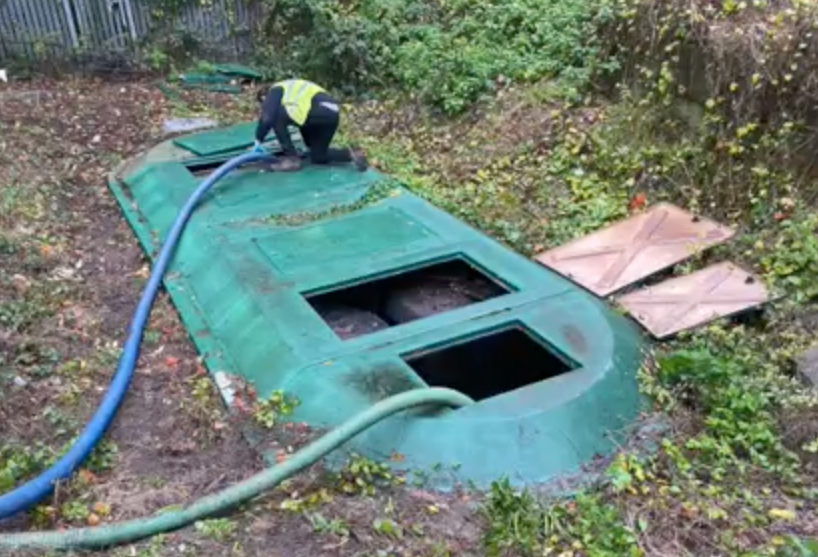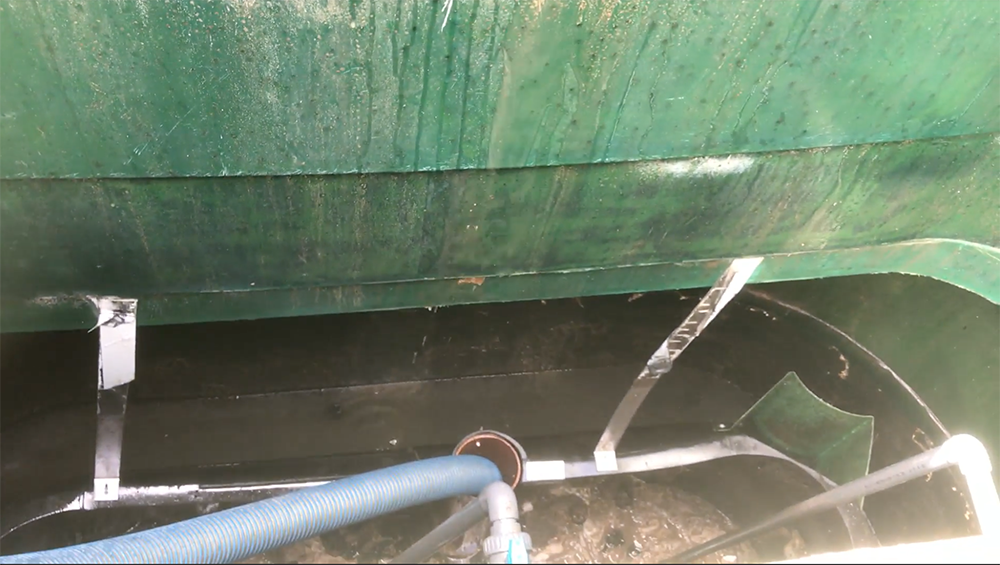Pumping station fatigue. Why they implode.
The effects of fatigue on your tank.
Pumping stations or septic tanks can experience fatigue, especially if they are used for anything other than what they’ve been designed for. A cheap tank can end up being a very expensive one. In the case of a pumping station, if the tank has not been properly installed, i.e. with the invert level too deep for the tank, diminishing the capacity; you have bought a cheap pumping station, or the float switches have been set incorrectly, then fatigue will play a part in ageing your system.
Tanks are designed to handle one cubic m in capacity, depending on the tank. (Please note: roof water entering the system indirectly or directly can add 10,000 litres to this. This causes an overload to the system.) A septic tank, for instance, fills roughly 3/4 of the tank; once the liquid has reached this level, it overflows into a pipe that leads to the drainage field.
The point is it is static; it does not move for six months or even a year, in some cases several years – therefore, no movement so less fatigue. When a system is overloaded damage to the system occurs and in turn so does fatigue. This is then an ever-increasing circle of problems. Learn more about when to empty your septic tank in our blog entitled ‘Septic Tank Emptying’.
When fatigue occurs:
- Internal baffles can be damaged.
- Float switches fail to function.
- Manual operation is necessary, which in time causes more fatigue.
Materials used to make a septic tank, treatment plant or pumping station.

A case in point is where new houses were being installed; one of the conditions was to have tanks installed for roof water recycling, supplying the WC et cetera with the recycled water. Mains water was connected to the tank as a backup plan if there was no rain. As a consequence, the tank during long periods of “no rain”, was frequently completely emptied by the occupants of the house, triggering the mains water to fill the tank overnight.
The whole thing would start once again the next day. The tank was acting like a human lung; “in and out” daily “in and out”, the movement of the imploding, causing stress to the tank material as it was too weak for the application, caused fatigue. Cracking occurred in all of the tanks that were installed, eventually collapsing. You could see the actual impression of the tank in the concrete. The tank had been acting as a mould in the concrete; The tank was never designed to adhere to the concrete.
Surrounding the tank in concrete holds the tank in place (in the ground) protects the tank from debris, but not from fatigue. If the tank is made up of materials that are weak, the concrete will not stop the tank from imploding.
Although, it will not pop out the ground when emptied by a tanker as a result of the ground being flooded, or a blockage, or ground that has a high water table; (Though it’s unlikely that septic tank would be installed where there is a high water table anyway but the effects of a blockage could simulate this.)
Put right defects and don’t settle for less.

When a treatment plant or a pumping station is delivered for installation, a lot of time and money has gone into that arrangement: a machine is on hand to lift the tank off the lorry; the teams are in place to receive and install the tank, and prep work has been carried out.
If there is a defect, it means rearranging the teams work - transporting the diggers to the next job or back to the yard. The unit is sent back to join the queue at the manufacturers for the sake of a small repair or reinforcement. It’s not worth the effort, and no one is going to pay for the disruption; no one seems to want to take responsibility for a small defect in the tank.
We here at ASL can improvise; we have a small repairs team who are quite used to doing professional alterations or repairs, even after the installation. It’s common for busy installation teams on a tight budget to leave these adjustments or small repairs, often never to be discovered but we would not fit a new tank with these imperfections because we know it would lead to bigger problems in the future because the treatment plant would struggle on with these defects that often degrade the quality of the discharge.
The quality of tank plays a huge role in the success of the entire sewage system therefore we order quality tanks made out of quality materials. If your installation is with us from the start we will make sure you have the right system for the job you need it to do.
If you have questions about your private sewage system, septic tank, treatment plant or pumping station give our friendly team in the office a call, we are only too happy to help.

